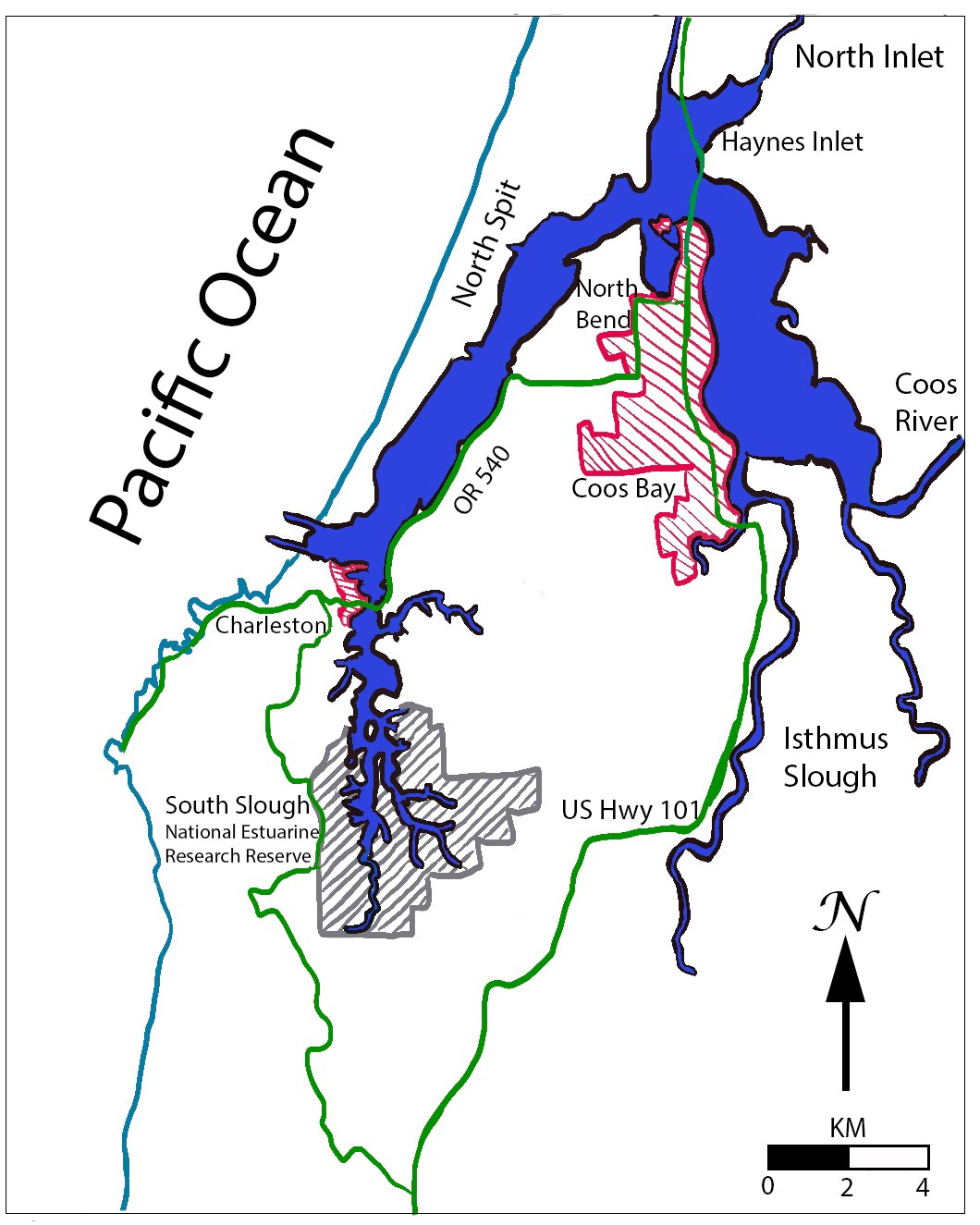|
Hydrotherikornis
''Hydrotherikornis oregonus'' is an extinct species of auk. The fossil specimen was found near Coos Bay Coos Bay (Hanis language, Coos language: Atsixiis or Hanisich) is an estuary where the Coos River enters the Pacific Ocean, the estuary is approximately 12 miles long and up to two miles wide. It is the largest estuary completely within Oregon sta ... on the Oregon coast. It was found in 1926 and published in 1931. The distal tibiotarsus late Eocone fossil is one of the earliest examples of pan-Alcidae in North American. References {{Taxonbar, from=Q20817843 Auks Fossils of the United States Extinct birds of North America ... [...More Info...] [...Related Items...] OR: [Wikipedia] [Google] [Baidu] |
Pan-Alcidae
Pan-Alcidae is a clade of charadriiform birds containing the auks and their extinct relatives. It was named in 2011 by N.A. Smith, who defined it as all descendants of the common ancestor of the group Mancallinae and crown group auks (Alcidae), but some have disputed the use of the Pan- prefix in general for family-group names regulated by the Zoocode (ICZN Code).Louchart, A., Viriot, L. & Dubois, A. (2013): The use of the prefix Pan- and other problems in zoological family-series nomenclature. Zootaxa 3750 (2): 197-200. doi: 10.11646/zootaxa.3750.2.9 Evolution and distribution The earliest unequivocal fossils of pan-alcids are from the late Eocene, some 35 mya. The genus '' Miocepphus'', (from the Miocene, 15 mya) is the earliest known from associated specimens. Two Paleogene fossils were previously assigned to the Alcidae, but have since been removed to other clades: ''Hydrotherikornis'' (late Eocene) is a procellariiform and ''Petralca'' (Late Oligocene) is a loon. Most ex ... [...More Info...] [...Related Items...] OR: [Wikipedia] [Google] [Baidu] |
Auks
Auks or alcids are birds of the family Alcidae in the order Charadriiformes. The alcid family includes the murres, guillemots, auklets, puffins, and murrelets. The family contains 25 extant or recently extinct species that are divided into 11 genera. Auks are found throughout the Northern Hemisphere. Apart from the extinct great auk, all auks can fly, and are excellent swimmers and divers (appearing to "fly" in water), but their walking appears clumsy. Names Several species have different English names in Europe and North America. The two species known as "murres" in North America are called "guillemots" in Europe, and the species called little auk in Europe is referred to as dovekie in North America. Etymology The word "auk" is derived from Icelandic ''álka'' and Norwegian ''alka'' or ''alke'' from Old Norse ''ālka'' from Proto-Germanic *''alkǭ'' (sea-bird, auk). Taxonomy The family name Alcidae comes from the genus '' Alca'' given by Carl Linnaeus in 1758 ... [...More Info...] [...Related Items...] OR: [Wikipedia] [Google] [Baidu] |
Coos Bay
Coos Bay (Hanis language, Coos language: Atsixiis or Hanisich) is an estuary where the Coos River enters the Pacific Ocean, the estuary is approximately 12 miles long and up to two miles wide. It is the largest estuary completely within Oregon state lines. The Coos Bay watershed covers an area of about 600 square miles and is located in northern Coos County, Oregon, Coos County, Oregon, in the United States. The Coos River, which begins in the Oregon Coast Range, enters the bay from the east. From Coos River, the bay forms a sharp loop northward before arching back to the south and out to the Pacific Ocean. Haynes Inlet enters the top of this loop. South Slough National Estuarine Research Reserve, South Slough branches off from the bay directly before its entrance into the Pacific Ocean. The bay was formed when sea levels rose over 20,000 years ago at the end of the Last Glacial Maximum, flooding the mouth of the Coos River. Coos Bay is Oregon's most important coastal industrial cen ... [...More Info...] [...Related Items...] OR: [Wikipedia] [Google] [Baidu] |
Eocene
The Eocene ( ) is a geological epoch (geology), epoch that lasted from about 56 to 33.9 million years ago (Ma). It is the second epoch of the Paleogene Period (geology), Period in the modern Cenozoic Era (geology), Era. The name ''Eocene'' comes from the Ancient Greek (''Ēṓs'', 'Eos, Dawn') and (''kainós'', "new") and refers to the "dawn" of modern ('new') fauna that appeared during the epoch.See: *Letter from William Whewell to Charles Lyell dated 31 January 1831 in: * From p. 55: "The period next antecedent we shall call Eocene, from ήως, aurora, and χαινος, recens, because the extremely small proportion of living species contained in these strata, indicates what may be considered the first commencement, or ''dawn'', of the existing state of the animate creation." The Eocene spans the time from the end of the Paleocene Epoch to the beginning of the Oligocene Epoch. The start of the Eocene is marked by a brief period in which the concentration of the carbon isoto ... [...More Info...] [...Related Items...] OR: [Wikipedia] [Google] [Baidu] |
Fossils Of The United States
A fossil (from Classical Latin , ) is any preserved remains, impression, or trace of any once-living thing from a past geological age. Examples include bones, seashell, shells, exoskeletons, stone imprints of animals or microbes, objects preserved in #Resin, amber, hair, petrified wood and DNA remnants. The totality of fossils is known as the ''fossil record''. Though the fossil record is incomplete, numerous studies have demonstrated that there is enough information available to give a good understanding of the pattern of diversification of life on Earth. In addition, the record can predict and fill gaps such as the discovery of ''Tiktaalik'' in the arctic of Canada. Paleontology includes the study of fossils: their age, method of formation, and evolutionary significance. Specimens are sometimes considered to be fossils if they are over 10,000 years old. The oldest fossils are around 3.48 billion years to 4.1 billion years old. Early edition, published online bef ... [...More Info...] [...Related Items...] OR: [Wikipedia] [Google] [Baidu] |



